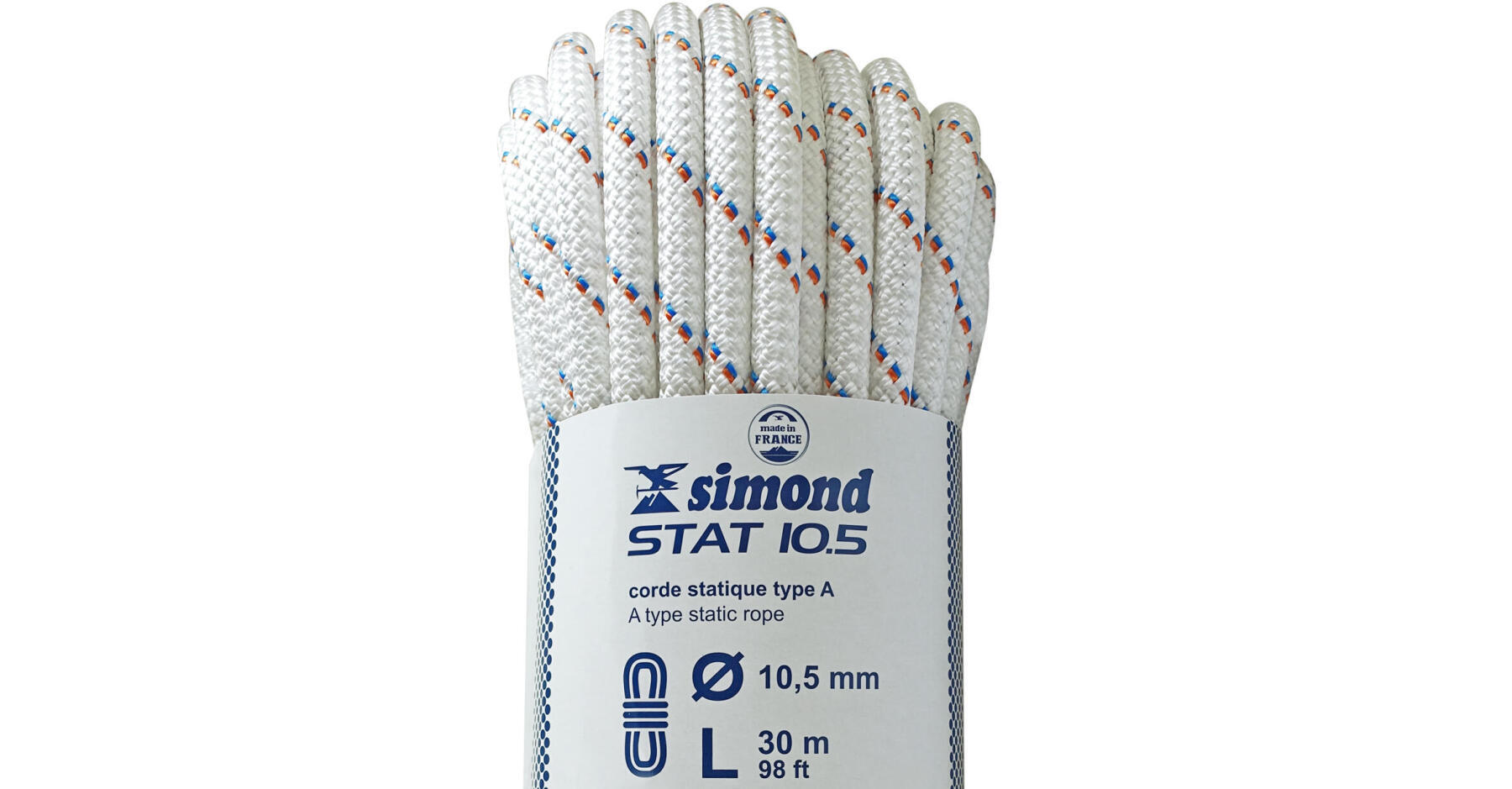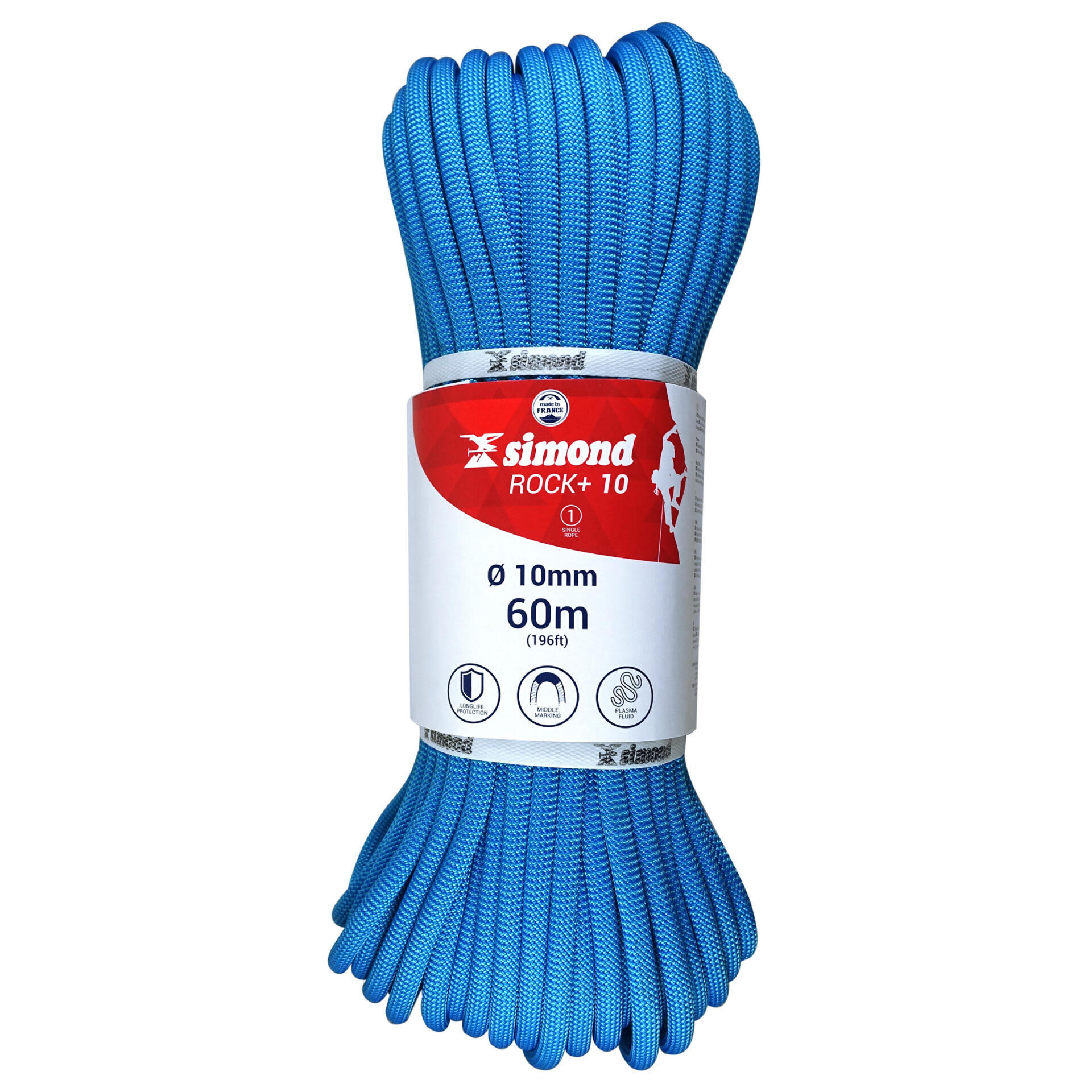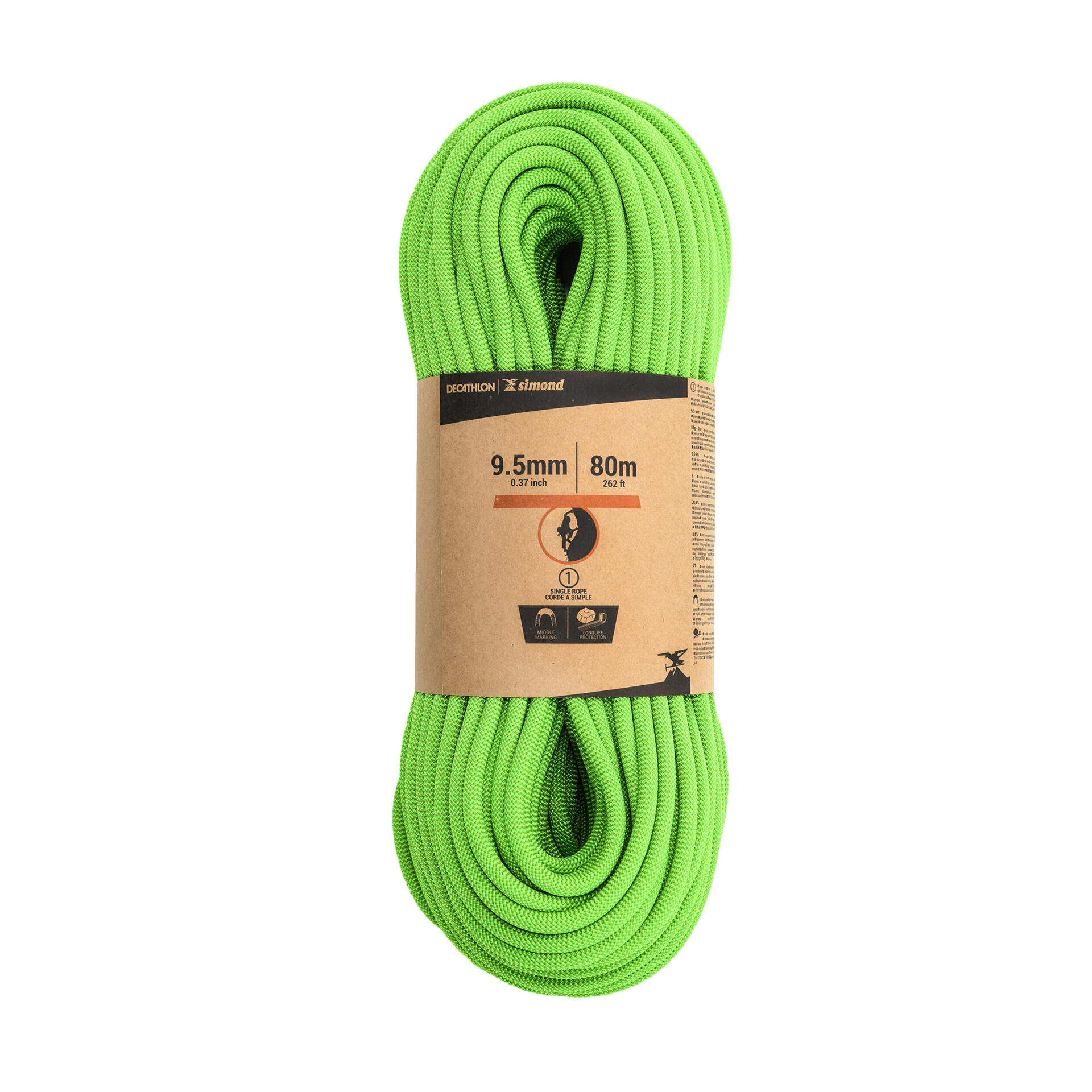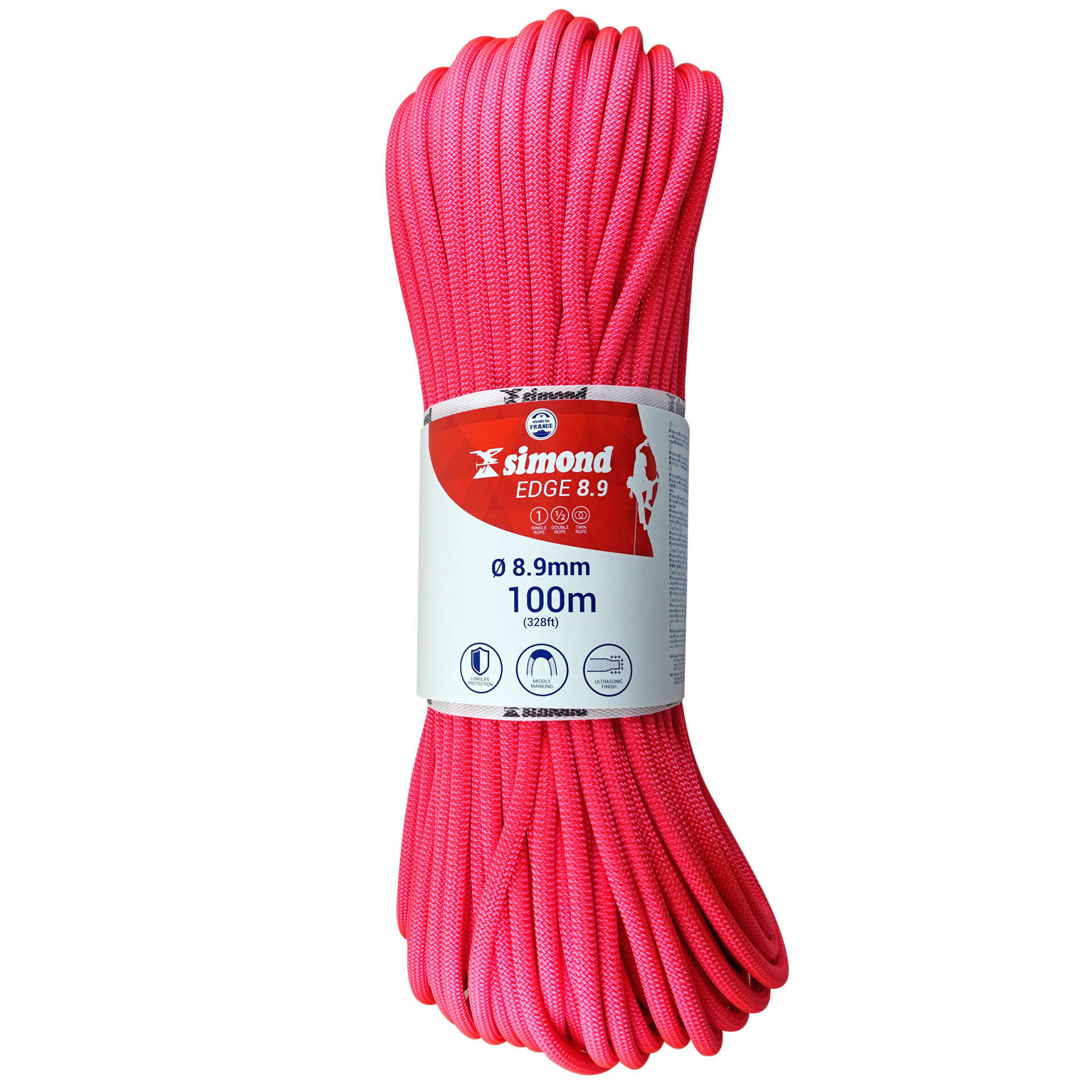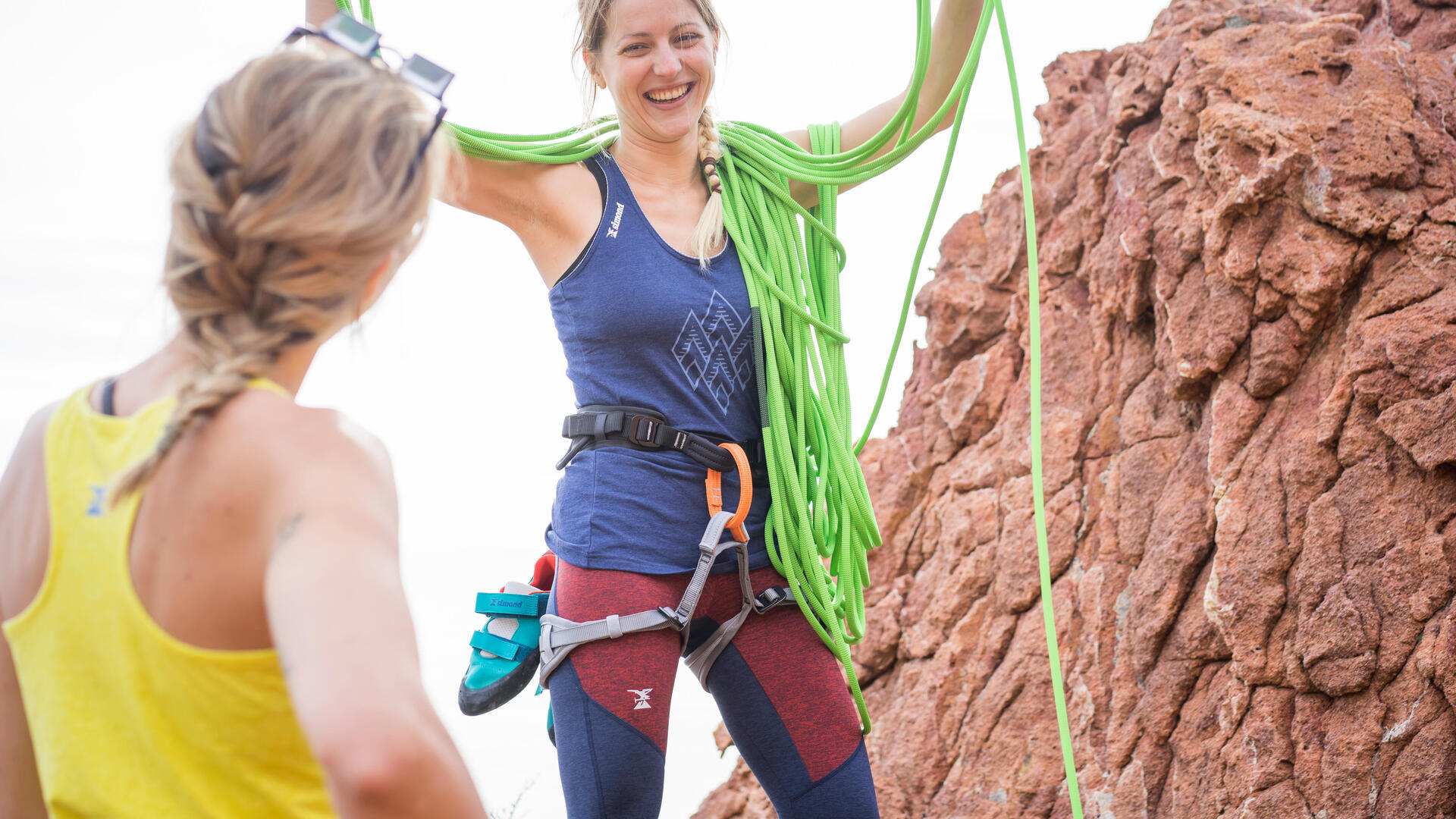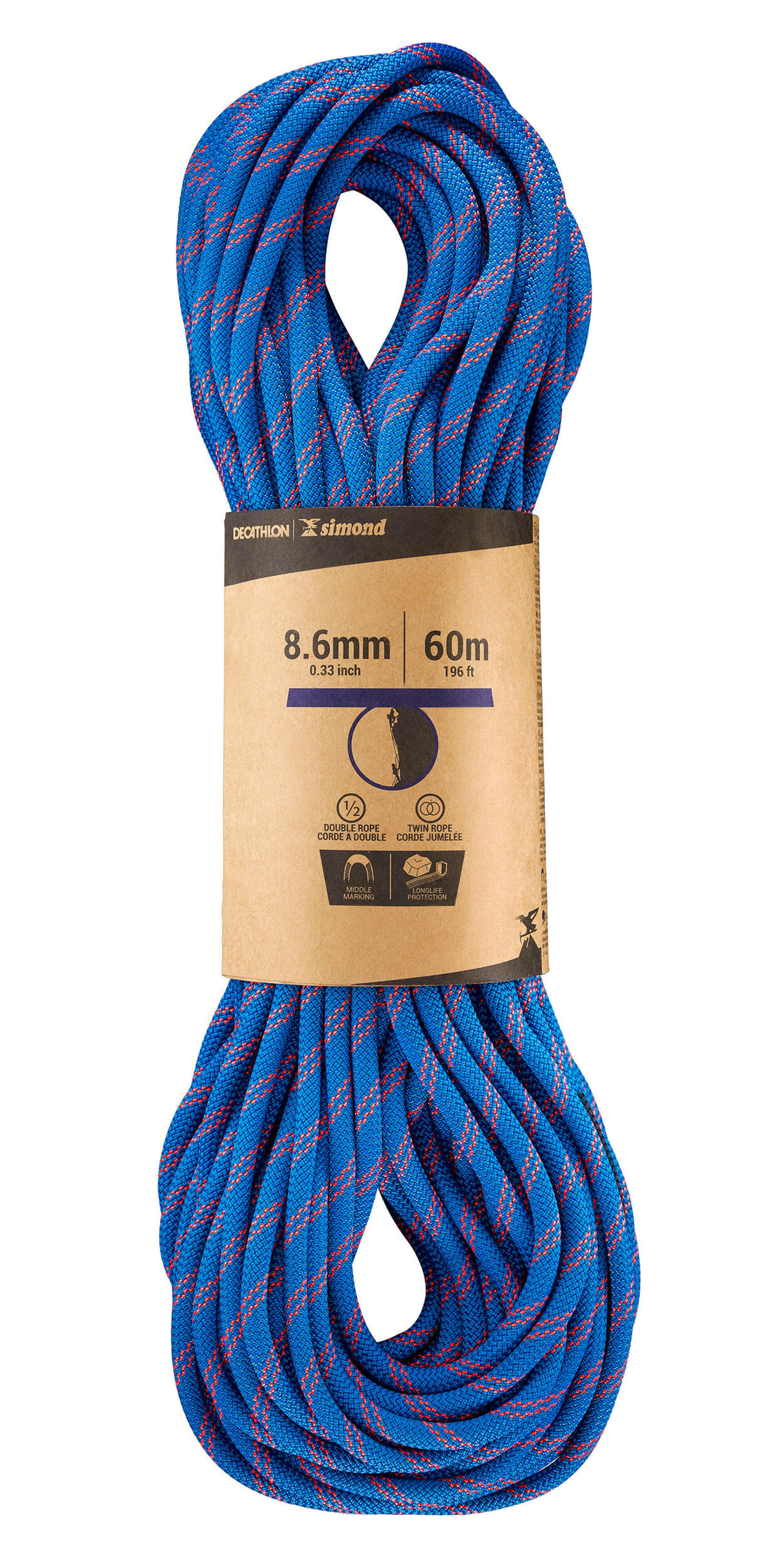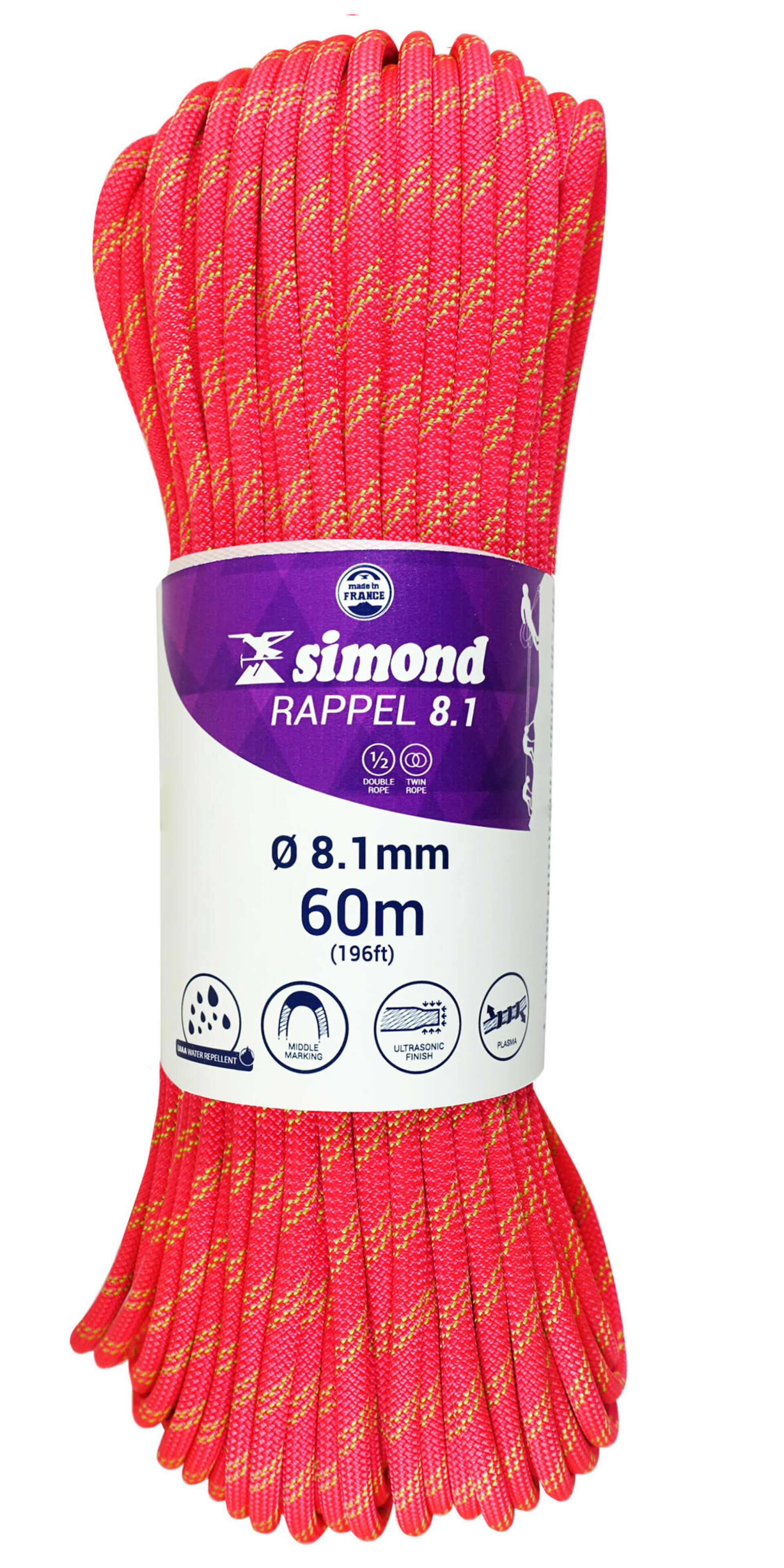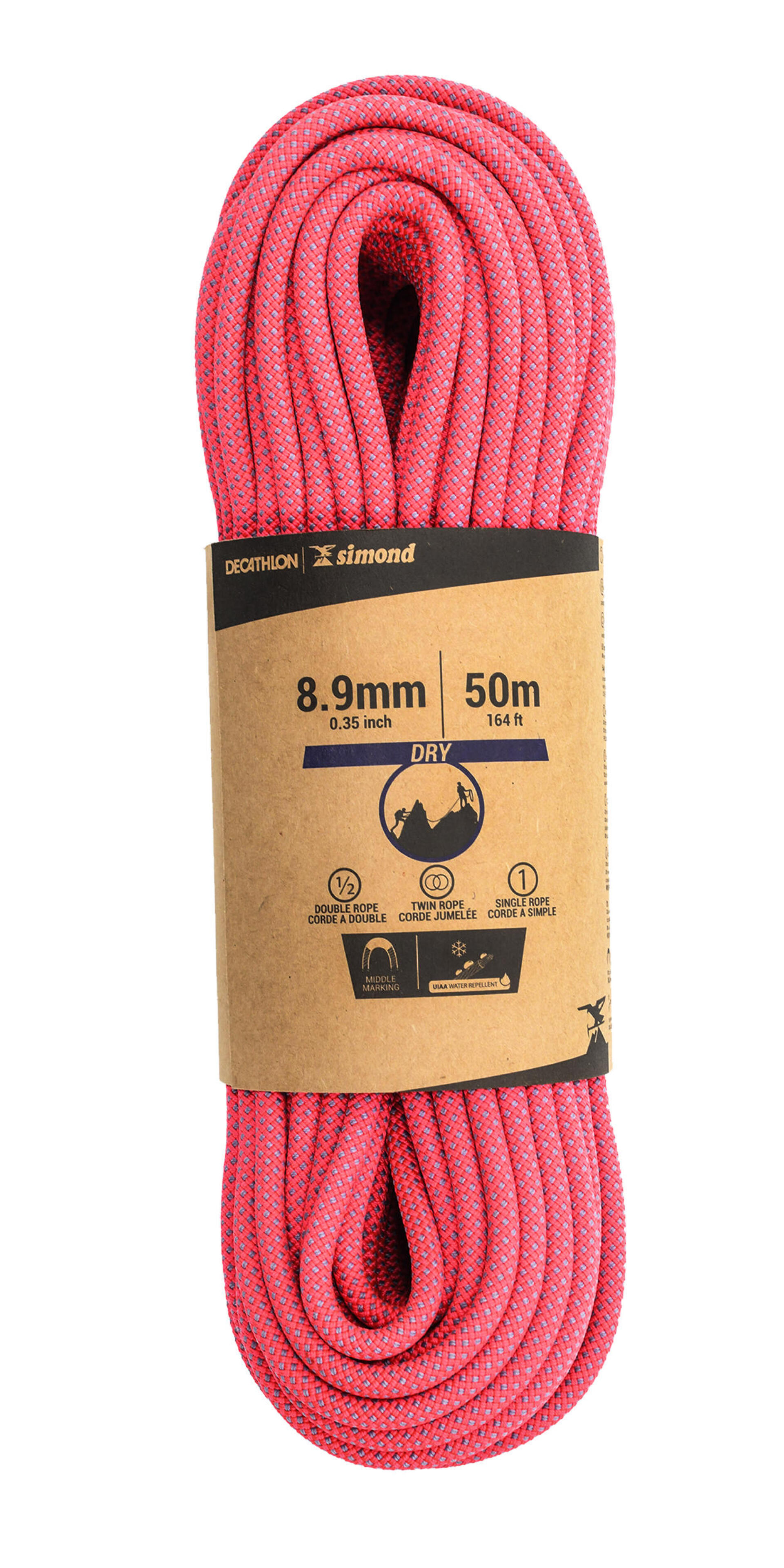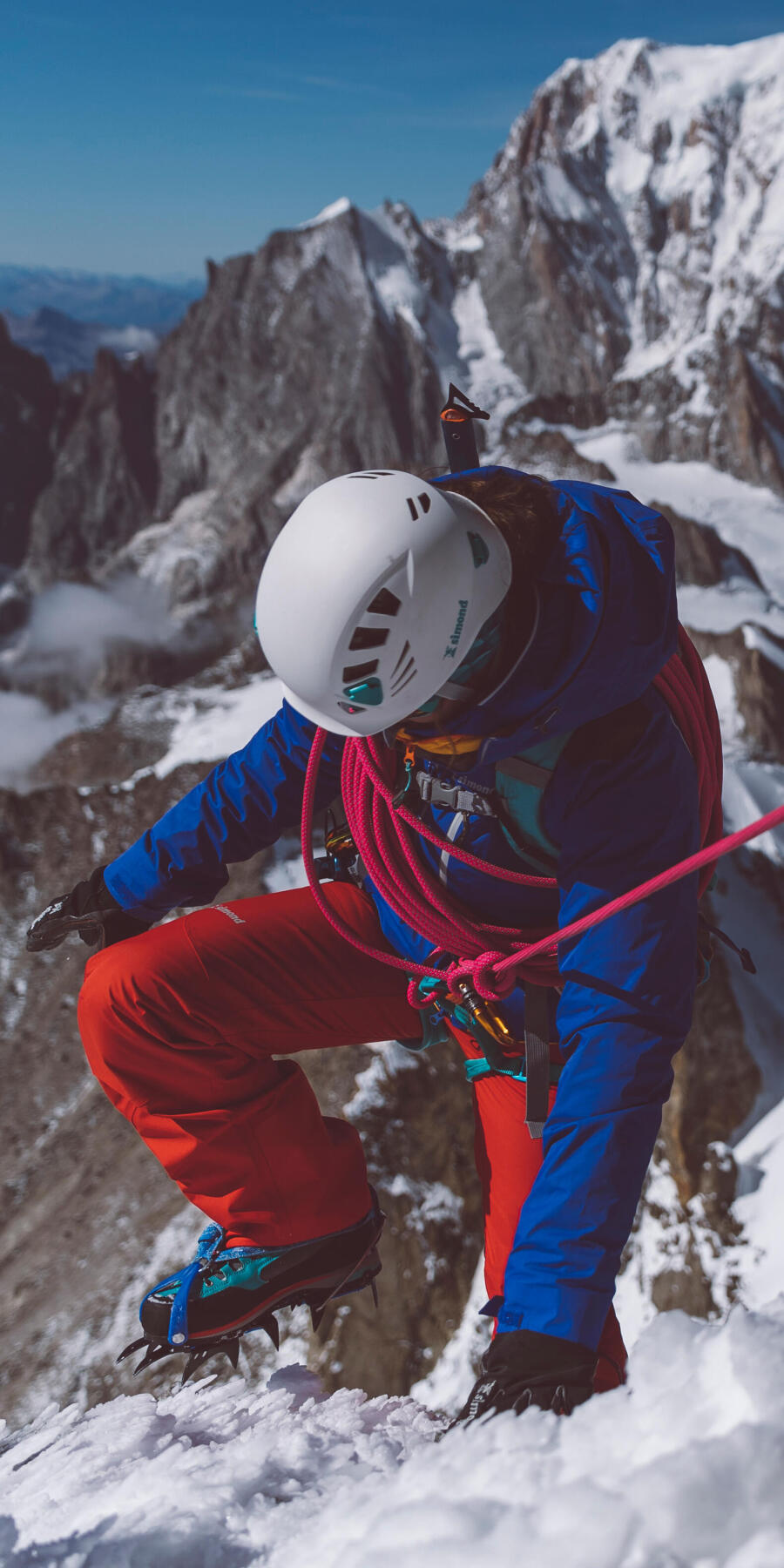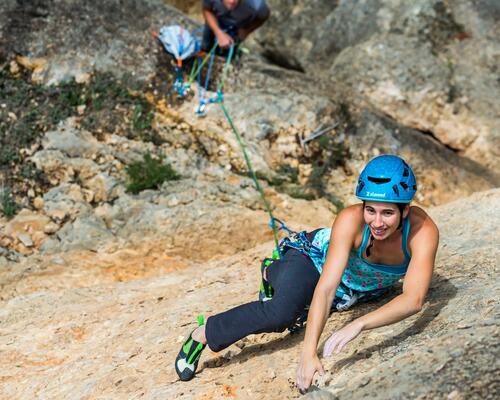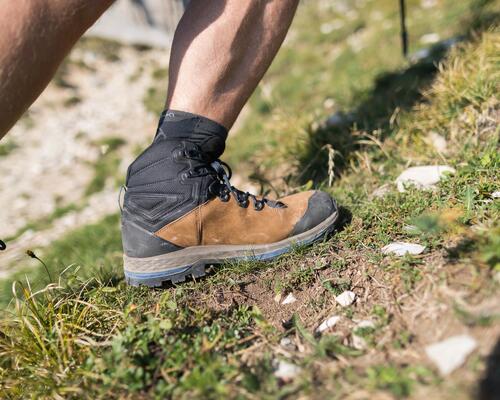Anatomy of a rope
At the heart of a rope is a set of nylon filaments (white strands) known as the core. These filaments stretch to absorb shocks. The core is protected by a sheath, which is composed of colourful braided strings. The rope’s strength and rigidity depends on the thickness of the sheath. It’s important to replace your rope as soon as the sheath begins to show signs of wear.


